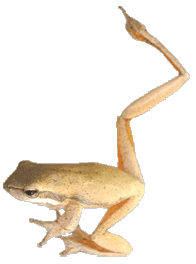What is Kimberella?
 Michael Anissimov
Michael Anissimov
Kimberella is a highly unusual and important fossil from the Late Ediacaran, dated to between 555 and 558 million years ago, 13 million years before the start of the Cambrian period. Kimberella, originally classified as a jellyfish and then a box jellyfish, had its classification modified in 1997 to that of a stem group mollusk or mollusk-like creature. This was due to anatomical features (such as a dorsal non-mineralized shell) and the presence of scratchings nearby that suggest the animal had a radula, the chitinous tongue universal to all mollusks.
Because of the age and classification of Kimberella, it is the oldest well-documented triploblastic (three tissue layered) bilaterian (bilaterally symmetrical) animal in the fossil record. Another, earlier possible bilateran is Vernanimacula, dated to 580-600 million years ago, but some scientists argue that these 0.1 mm objects are just infilled bubbles, not fossils with organic origin. In any case, it shows that the earliest known bilateral animal was a mollusk or at least mollusk-like, making it a likely member of the protostomes, one of two major groups of non-cnidarian (jellyfish, coral, etc.) or ctenophore (box jelly) animals.

During the age in which Kimberella lived, there was little multicellular life, and the ocean floors were dominated by microbial mats -- layers of bacteria and archaea several millimeters thick. Kimberella was a "mat grazer" -- an animal that specialized in scooting along the upper layer of the microbial mat and scraping off bits of microbes with its chitinous radula. The larger specimens of this animal measure 15 cm (6 in) in length, 5 to 7 cm (2-3 in) in width, and 3 to 4 cm (1-1.3 in) high, though the smallest are only 2 to 3 mm long. It had a soft "skirt" that it might have used for respiration, and could be withdrawn into its shell in case of danger.
The time at which Kimberella lived, the Late Ediacaran, had other simple organisms that serve as previews of the complexity that would evolve at the dawn of the Cambrian, just 13 million years later. It lived alongside small, button-like, tri-symmetric organisms called trilobozoans, simple medusa impressions that belonged to early cnidarians (relatives of jellyfish), frond-shaped filter feeders like Charniodiscus, and mysterious ribbed ovals of a phylum called Proarcticulata. None of these other organisms left definitive trails, but Kimberella did.
AS FEATURED ON:
AS FEATURED ON:











Discuss this Article
Post your comments